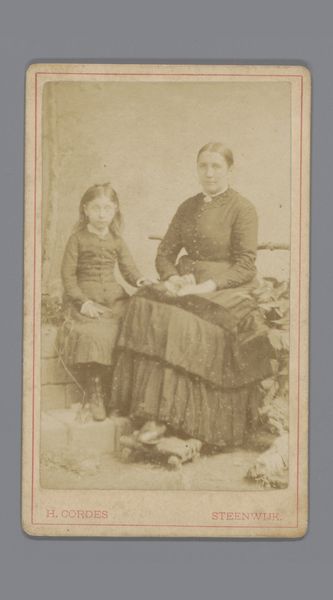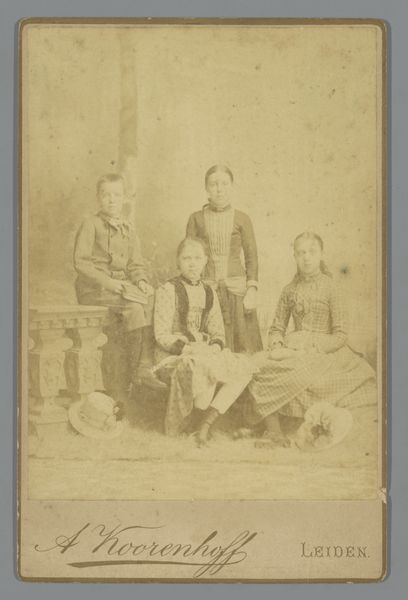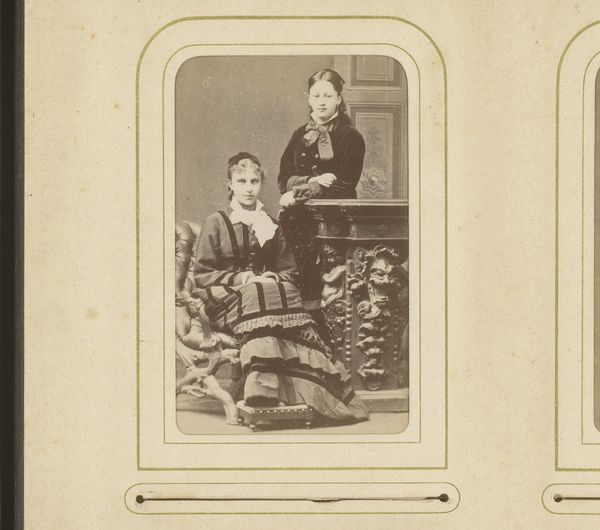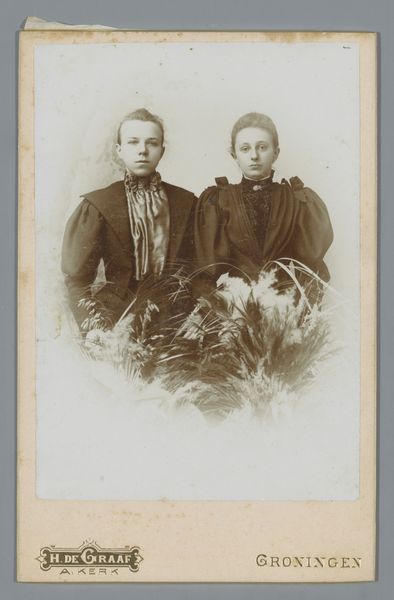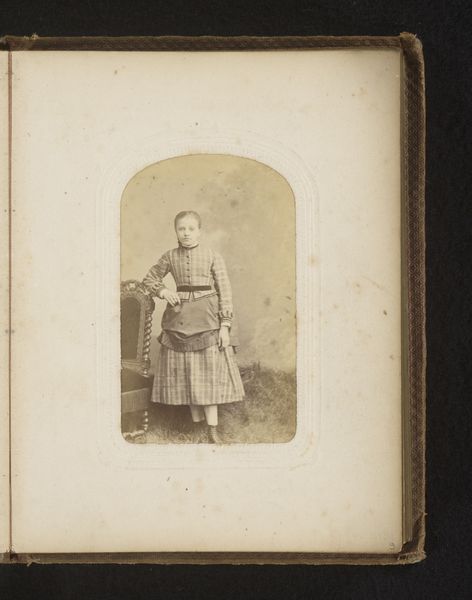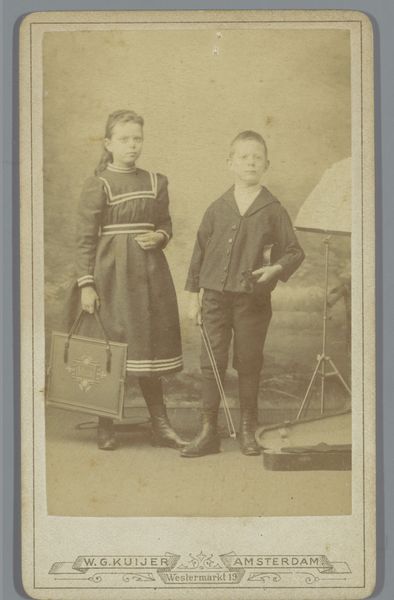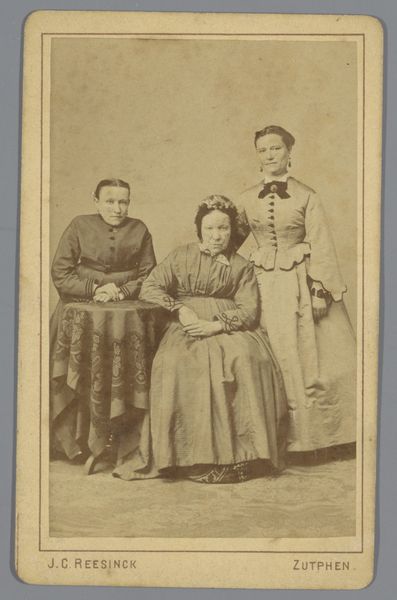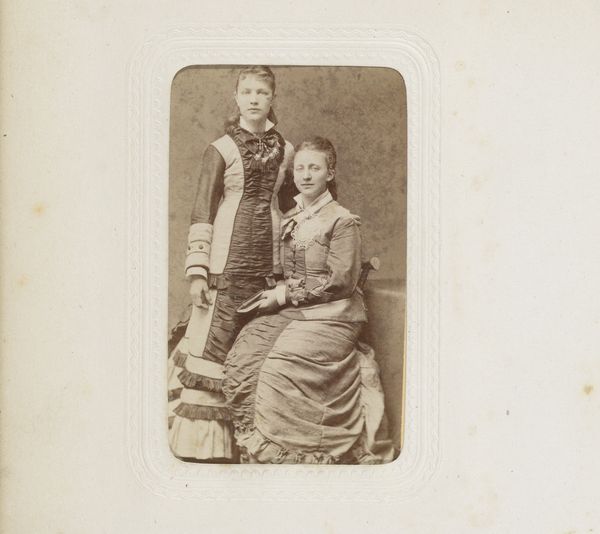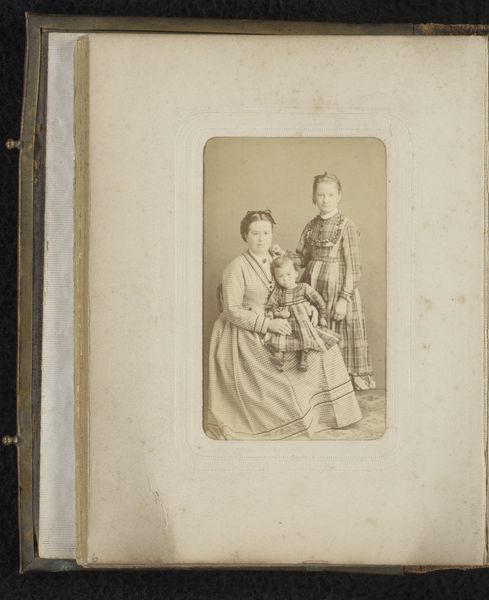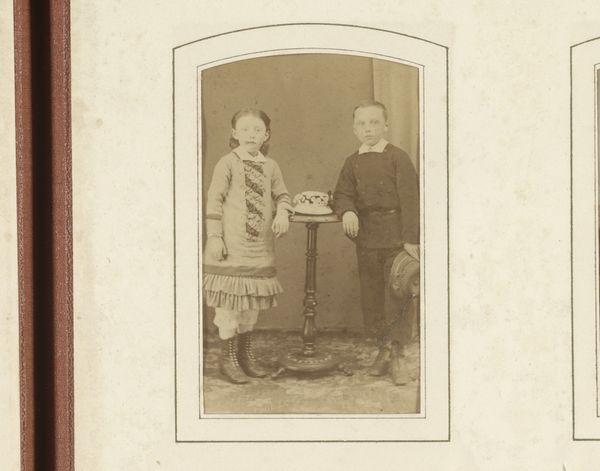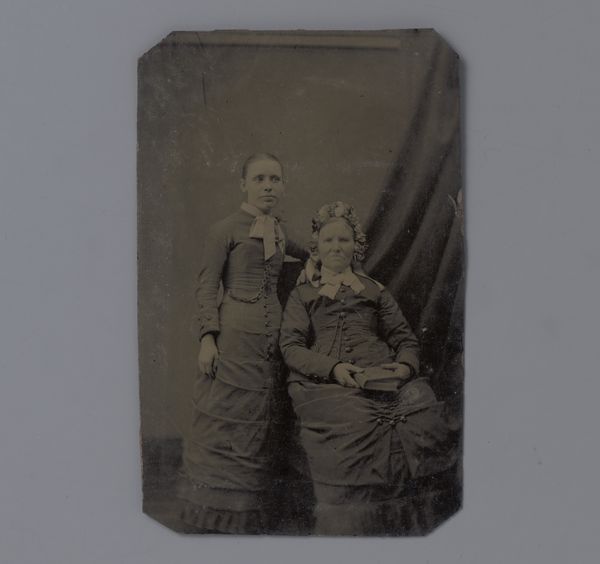
photography
#
portrait
#
photography
#
genre-painting
#
realism
Dimensions: height 134 mm, width 100 mm
Copyright: Rijks Museum: Open Domain
This is a photograph by Maria Hille, likely made in The Hague in the mid-19th century. As a cabinet card, it was produced through the albumen print process, using a glass negative to create multiple positive images on paper coated with egg white. Think about that egg white, essentially a waste product repurposed to create a smooth, light-sensitive surface. This perfectly encapsulates the ingenuity and resourcefulness often found at the intersection of art and industry. The sepia tone is typical of this process, a result of the silver salts reacting with the albumen. Note, too, the constructed backdrop, the rustic chair, and the branch used as a prop. These details speak to a burgeoning visual culture, where even standardized formats could be imbued with artistic intent. The photograph isn't just a record, it's a carefully crafted image, sold as a commodity. By considering the materials and methods behind it, we can understand the rise of photography as part of broader social and economic shifts.
Comments
No comments
Be the first to comment and join the conversation on the ultimate creative platform.
